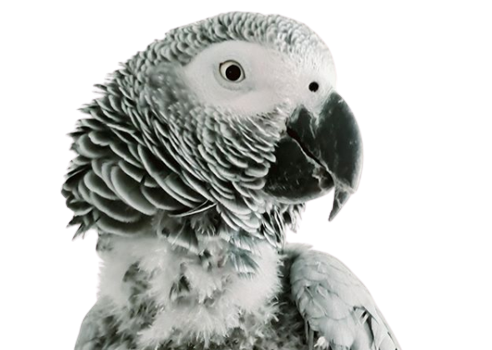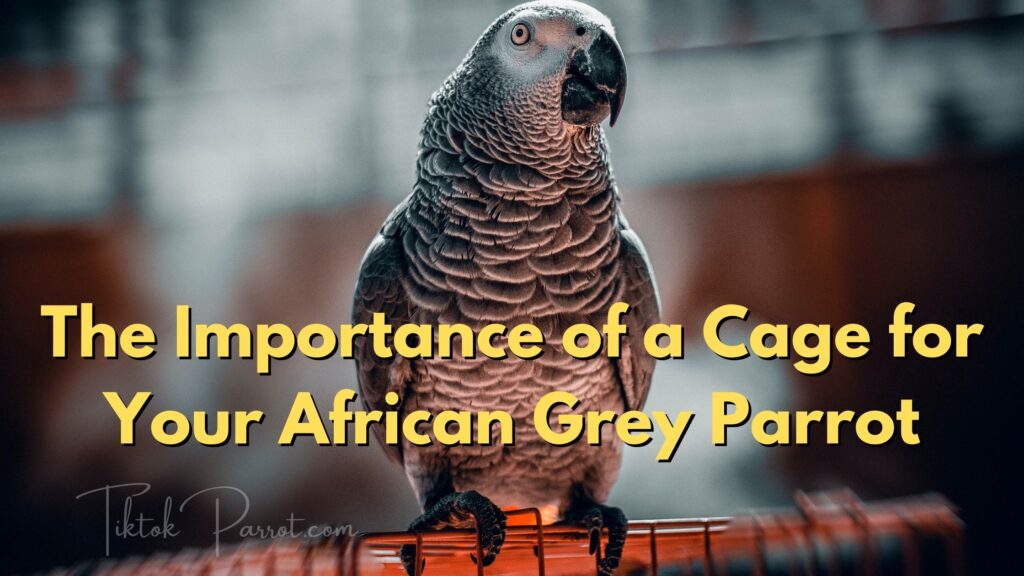Cages are not just a place to keep your parrot, they are a necessity. A good cage will provide your African Grey Parrot with the opportunity to be a happy bird. African grey parrots are intelligent and social animals. They need a lot of attention and stimulation to be happy. A cage should be large enough for the bird to perch, bathe, and climb.
Table of Contents
African grey parrots are known for their intelligence, and many people buy them as pets because of this. They have been known to mimic human voices and can even learn how to speak words. To keep them happy and healthy, the cage is one of the most important things for an African Grey because it provides them with a place to sleep, eat, and play.
Remember, these birds need more than just food and water. They need stimulation and room to explore to stay healthy. This is why they must have access to an outdoor area or aviary when they are not in their cages.
Because African grey parrot needs a lot of attention and stimulation to be happy. Therefore a cage should be large enough for the bird to perch, bathe, and climb.
Why a bigger cage is important for a bird
The importance of a cage for your African Grey Parrot is vital to provide them with the best living environment possible.
A cage is an essential investment for any pet owner, and it’s important to get the right one for your pet. A bird’s cage has to be large enough for them to fly around, but not so big that it can’t find its food or water. It should also have a high-quality perch and food dish, as well as a place to hide. The right cage will provide your pet with a healthy living environment that meets all of its needs.
Therefore the cage should be big enough to allow the bird to fly around and stretch its wings. A cage that is too small will lead to injury, disease, and a shorter life span.
Birds are different from other pets because they need a lot of space. A bird’s cage needs to be much bigger than the size of a cat or dog’s enclosure. It is important for the health and well-being of your bird to give them enough space.
A cage for your African Grey Parrot should be large enough to allow them to move around comfortably without being too cramped. It should also be made out of materials that are safe for their feet, such as wood or metal.
The cage material matters for the safety of a bird
Birds are very delicate creatures, and their environment should be as close to nature as possible. The cage should provide the bird with everything it needs to feel safe and comfortable. They need a safe environment to live in. Therefore they need a cage that is made out of materials that are not harmful to them.
Some common materials used for cages are wire, plastic, and wood. The wire is not a good material because it can easily rust and then hurt the bird’s feet or beaks. Plastic is better than wire but can still become brittle over time, which can cause injury to the bird’s feet or beaks. Wood is a good material because it does not conduct electricity and will not cause injury to the birds’ feet or beaks.
Birds are usually kept in cages to protect them from predators and the environment. A bird’s cage should be made out of materials that are safe for birds. The cage should not have any sharp edges or corners, and it should be made out of non-toxic materials.
Materials that are not safe for birds include:
-Aluminum, zinc, copper, and lead because they cause neurological damage to the bird’s brain and nervous system
-Plastic because it is difficult to clean and can trap bacteria
-Glass because it can break when a bird hits it with its wings or feet
Recommended cage size for an African grey parrot
Cages should be large enough for the bird inside them so that he or she can move around easily without feeling cramped or trapped. The cage should also have plenty of toys and things for the bird to chew on – this will help keep his beak trimmed down and prevent boredom as African greys can get easily stressed.
A cage should be at least 36” X 24” x 48” (3 ft x 2 ft x 4 ft) in size. Although, for a cheerful parrot, you should go larger than this so the parrot will have plenty of room to move and climb, particularly when you’re not spending more time with the bird.
It should also have a play stand and perches, they need to be able to fly around in the cage, which is why it needs to be as big as possible.
The more space they have, the less likely they are to get bored and want to chew on things in your home.
Do not keep an African grey always in a cage
A cage is a place where the bird stays. It is a place where the bird cannot go out and fly freely. Sometimes, we keep the African Grey inside the cage because it wants to stay with us. But as time goes by, it will be tired of staying in the same place all day long because African Grey parrots can be stressed easily.
Also, a cage is a place that has many limitations on what the bird can do. The bird can’t fly freely outside or go out to explore new things when it’s inside the cage. It will be boring after staying in the same place for too long and might not want to stay there anymore.
Always caged African grey will not be trained as you want, the parrot will be frightened of human contact and can become aggressive as well.
If you want your Grey to stay happy, healthy, and playful, then I would say try to give it some time to spend outside its cage as well.
Do not leave the grey in an open outdoor area, either the bird will fly away or get hurt by any predator. Keep a nice perch for the bird in the corner of your apartment or room along with some hanging toys and let it sit there freely. Because Greys can live happily on a perch in a small room and therefore they are one of the best pets for those who live in apartments.
Remember, the grey will never be able to talk unless it’s happy and healthy. That’s my personal own experience, as my Mitthu (TiktokParrot) could speak words & complete phrases in 3 different languages, he was the most talkative African grey parrot but sadly he passed away and could not live a longer life.
A lot of people ask me on social media how I trained my grey so well. Especially on Mitthu’s Tiktok account, the answer is simple, I rarely caged my parrot and provided him with the best possible care. Therefore he was able to become a very cheerful and the most talkative parrot.
If you found this blog helpful, It would be great if you could share it with your family and friends who might find it useful as well.
For more useful content about African Grey parrots, you can subscribe my site with your email to get notification upon publishing a new blog, the subscribe box you can see on the right side of this page. Also if you get an alert on your web browser while browsing my site, allow it and that will also give you an alert whenever I publish a new blog.
Check out my eBook “The Grey Area”
You might like to read these as well
Things you need to know about an African Grey Parrot’s Cage
Why Your Grey Parrot’s Diet Matters More Than You Think
Safe Fruits & Vegetables for African Grey’s
Best Food For African Greys (African Greys Diet Food)
How to Rear a Young African Grey Parrot
Understanding Your African Grey Parrot Nature and Type
How to Gain the Love of an African Grey Parrot
How to Tell if Your Grey Parrot is Getting the Right Nutrition
Chicken Bones: The Ultimate Nutritious Treat for African Grey Parrots
What diseases can African Grey parrots get?
African Grey Parrots: The Ultimate Guide to Care and Training
An Avocado Killed My African Grey Parrot
Stay safe and much love !




